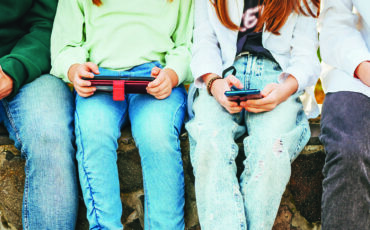5 Benefits of Social Media for Kids

Parents often hear stories about the shadowy side of social media, but the networking tool can be instrumental in helping kids learn, connect, raise awareness and grow into more mindful communicators. Here’s social media’s positive side.
Table of Contents
Invites creative expression
Kids who have a passion for photography, art, video production, music or writing can use applications like blogs, YouTube and Instagram to express themselves. Social media can be a great source of creativity, with kids posting poems, posing interesting questions or sharing funny or cool videos.
Tip: Discuss how your child will respond to any online negativity. Remove geo-locator tags from photographs and overly specific profile information. Establish privacy settings and remind your kids to make positive choices online.
Fosters purposeful mindfulness
Encourage your children to practice public speaking and presentation skills by creating video interviews, podcasts and SlideShare presentations on topics that interest them.
Connects kids with friends
Social media can give kids the opportunity to meet peers who share their interests, which can boost their confidence in face-to-face interactions.
Tip: Balance out your child’s tech-use with “in-real-life” playdates and activities. Also role model responsible device use, set consistent boundaries and establish digital citizenship rules.
Promotes awareness
Social media allows for a deeper understanding of various cultures and world issues.
Tip: Show your kids sites that other young people have started like FairED that are healthy examples of positive social media use. Altruistic kids can complement tweets and posts about their campaign with video interviews and short informational clips to educate and share.
Raises critical thinkers
More educators are integrating social media into the classroom beginning in elementary school.
Teachers are emphasizing media literacy and educating students to question the motive behind what’s being posted. They also role model how to use platforms like YouTube, Skype and Twitter to connect with experts and bring textbook materials to life.
“If you can see an ice castle in Siberia, then it makes it really interesting when you are reading about it,” says Sarah Pike, an elementary school principal. “And the kids thought it was exciting when we did some Skyping with a National Geographic tornado chaser.”
Tip: After your next family vacation, invite your kids to make an iMovie with their favorite photos and videos, create a digital photo album or post a review of their vacation on a family blog.
– Christa Melnyk Hines





